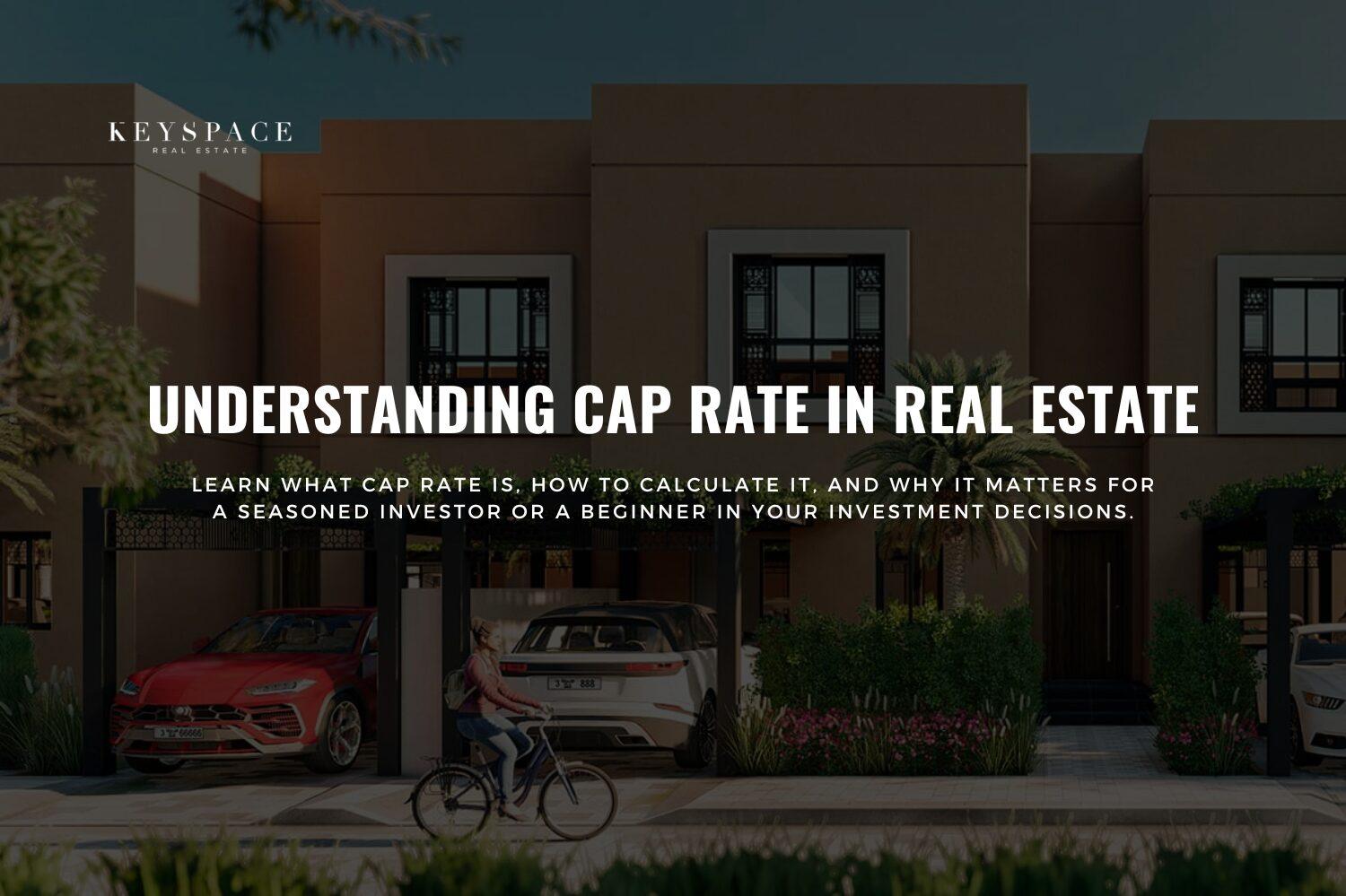Real estate investing can seem like a labyrinth of terms and metrics. One crucial term that frequently comes up is the capitalization rate or “cap rate.”
But what exactly it is, and why does it matter so much in real estate?
In simple terms, it is a measure used to evaluate the return on investment of a real estate property. Understanding this concept is essential for making informed investment decisions.
Understanding Cap Rate
Basic Formula of Cap Rate
It is calculated using a straightforward formula:
Cap Rate=Current Market Value of the Property/Net Operating Income (NOI)
This formula highlights two key elements: the net operating income (NOI) and the property’s current market value.
Elements of Calculation
- Net Operating Income (NOI): This is the annual income generated by the property after deducting all operating expenses, but before accounting for taxes and interest payments.
- Current Market Value: This is the price at which the property can be sold in the current market.
Significance:
Why it Matters to Investors
Investors use the it to gauge the profitability and potential return on investment for a property. A higher rate generally indicates a higher return, making the property more attractive to investors.
Property Valuation
It also plays a significant role in property valuation. By dividing the NOI, investors can estimate the property’s market value. This makes it a critical tool for both buying and selling real estate.
How to Calculate:
Step-by-Step Calculation
- Determine the NOI: Calculate the total rental income and subtract all operating expenses.
- Assess the Market Value: Estimate the current market value of the property through appraisal or market comparison.
- Apply the Formula: Divide the NOI by the market value to get it.
Examples of Calculation
For instance, if a property has an NOI of $100,000 and a market value of $1,000,000, the rate would be:
CR=100,000/1,000,000=0.10 or 10%
Factors Influencing CapRate
Market Conditions
Economic conditions, interest rates, and market demand can significantly impact it. In a booming economy with high property demand, the rates tend to be lower.
Property Type and Location
The type and location of the property also influence the cap rate. Prime locations with high demand typically have lower cap rates, reflecting lower risk.
Rental Income and Expenses
Higher rental income and lower operating expenses improve the NOI, leading to a higher cap rate.
CapRate vs. Other Metrics
CapRate vs. ROI (Return on Investment)
While the caprate measures the potential annual return based on NOI and market value, ROI considers the total return on the entire investment, including financing.
CapRate vs. Cash on Cash Return
Cash on cash return evaluates the actual cash income relative to the cash invested, whereas caprate focuses on the property’s overall profitability.
CapRate vs. Internal Rate of Return (IRR)
IRR accounts for the time value of money and provides a more comprehensive picture of the investment’s profitability over time compared to the caprate.
CapRate in Different Real Estate Markets
Residential vs. Commercial Real Estate
Caprates can vary widely between residential and commercial properties. Commercial real estate often has higher caprates due to higher risks and returns.
Urban vs. Suburban vs. Rural Markets
Urban properties usually have lower caprates due to higher demand and lower risk, while suburban and rural properties might offer higher caprates.
CapRate Trends and Analysis
Historical CapRate Trends
Examining historical caprate trends can provide insights into market cycles and help predict future movements. For example, caprates tend to rise during economic downturns.
Predicting Future CapRate Movements
Predicting caprate trends involves analyzing economic indicators, market demand, and interest rates. A thorough analysis can aid in making better investment decisions.
Using CapRate for Investment Decisions
Assessing Risk with CapRate
A higher caprate often indicates higher risk but potentially higher returns. Investors must balance their risk tolerance with the desired returns.
Comparing Multiple Properties
Caprate allows investors to compare different properties on a level playing field, helping them choose the most profitable options.
Limitations of CapRate
Potential Pitfalls and Misinterpretations
Relying solely on caprate can be misleading. It doesn’t account for future income growth, property appreciation, or potential risks.
Over-Reliance on CapRate
Investors should use caprate alongside other metrics and perform a comprehensive analysis to avoid over-reliance on this single metric.
CapRate and Property Management
Improving CapRate through Management
Effective property management can enhance the NOI by reducing expenses and increasing rental income, thereby improving the caprate.
Impact of Property Upgrades on CapRate
Investing in property upgrades can lead to higher rents and lower vacancy rates, positively impacting the caprate.
CapRate and Financing
Role of CapRate in Securing Loans
Lenders often consider caprates when assessing loan applications to gauge the investment’s profitability and risk.
CapRate Considerations for Lenders
A favorable caprate can facilitate better financing terms as it indicates a lower risk for lenders.
CapRate and Market Dynamics
Economic Factors Affecting CapRate
Economic factors like inflation, interest rates, and economic growth can influence cap rates, affecting property values and investment decisions.
Cap Rate and Real Estate Cycles
Understanding real estate cycles and their impact on cap rates can help investors time their investments more effectively.
Advanced Cap Rate Strategies
Adjusting Cap Rate for Vacancy Rates
Adjusting the cap rate to account for expected vacancy rates provides a more accurate picture of the property’s profitability.
Cap Rate Adjustments for Different Scenarios
Investors can adjust the cap rate based on various scenarios, such as changes in market conditions or operating expenses, to better assess potential returns.
Conclusion
In conclusion, the cap rate is a vital metric for real estate investors, providing insights into a property’s potential return and risk.
While it offers a simple and effective way to compare different investments, it’s crucial to use it alongside other metrics for a comprehensive analysis.
By understanding and effectively utilizing cap rates, investors can make more informed decisions and enhance their investment strategies.



